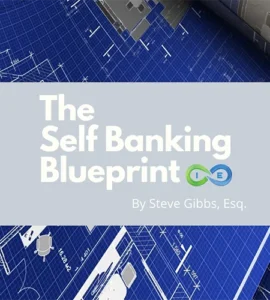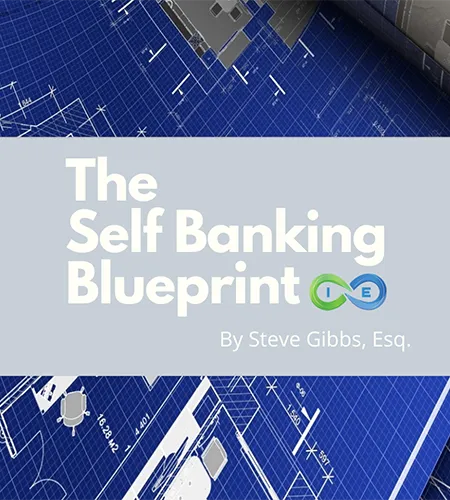If you’re considering leveraging your assets to secure a loan, your life insurance policy might hold untapped potential as collateral. This strategic move can offer you a pathway to obtain the financing you need without risking your home or other valuable assets. It’s a method that not only provides lenders with the assurance of repayment but also preserves the integrity of your personal estate. As you navigate this option, it’s crucial to weigh the benefits against the potential impacts on your policy’s intended beneficiaries and ensure the approach aligns with your broader financial objectives.
Collateral Assignment of Life Insurance
Table of Contents
- Key Takeaways
- What is a Collateral Assignment of Life Insurance?
- Pros and Cons of Assigning Life Insurance Benefits
- Understanding Collateral
- How the Life Insurance Collateral Assignment Process Works
- What Types of Life Insurance Can Be Assigned as Collateral?
- Examples of Life Insurance as Collateral
- Setting Up a Collateral Assignment
- Common Mistakes to Avoid in a Collateral Assignment
- Evaluating the Suitability of a Collateral Assignment of Life Insurance
- Life Insurance for Collateral Assignment FAQs
- Is a Life Insurance Collateral Assignment Right for You?
Key Takeaways
- Strategic Financing: Utilizing your life insurance policy as collateral for a loan can be a strategic way to secure necessary financing without jeopardizing other personal assets, offering a safer alternative to traditional collateral like homes or cars.
- Loan Qualification and Terms: This approach can facilitate easier loan qualification and potentially more favorable loan terms due to the added security it provides to lenders, often resulting in lower interest rates.
- Impact on Beneficiaries: While using life insurance as collateral can protect other assets, it’s important to consider the potential reduction in the death benefit available to your beneficiaries, which could impact their financial security.
- Policy Eligibility and Process: Both term and permanent policies are eligible for collateral assignment, but the process involves specific steps, including policy application, collateral assignment form completion, and adherence to lender requirements.
- Seek Professional Advice: Given the complexities involved in using life insurance as collateral, obtaining personalized advice from a life insurance professional is crucial to navigate the process effectively and ensure alignment with your financial goals.
THE ULTIMATE FREE DOWNLOAD
The Self Banking Blueprint
A Modern Approach To The Infinite Banking Concept

What is a Collateral Assignment of Life Insurance?
A collateral assignment of life insurance is a conditional assignment that appoints a lender as an assignee of the policy. Similar to using other types of collateral for a loan – such as a property or a vehicle – if the loan is not repaid, the lender has a claim to some or all of the life insurance policy’s death benefit, and in some instances, the policy’s cash value.
With a collateral assignment of life insurance the lender is not a policy beneficiary. Therefore, having the lender be named as a collateral assignee instead, you can specify that the lender is entitled only to a portion of the death benefit (i.e., the amount of the unpaid balance on the loan). The remainder of the death benefit would then go to our named beneficiary.
Pros and Cons of Assigning Life Insurance Benefits
There are advantages and potential drawbacks when using life insurance as collateral for a loan.
Pros
On the plus side, having collateral gives a lender more security that you will repay the loan, making it easier to qualify. Likewise, this repayment security can result in a lower interest rate and payment for the borrower.
In addition, using the death benefit on a life insurance policy as loan collateral can keep other assets – such as the borrower’s home, car, and savings – protected from loss if the loan defaults. And, you can still have named beneficiary(ies) on the policy who receive the remainder of the death benefit proceeds.
Cons
There are, however, some potential disadvantages of using a life insurance collateral assignment, too. For instance, with the lender as an assignee, it can reduce the amount of proceeds left for survivors – which could put loved ones into financial hardship to come up with more funds to replace income or pay off other debts of the insured.
If the borrower does not yet have life insurance – but plans to obtain it as collateral – the policy’s premium cost can raise the borrower’s out-of-pocket expenses. Further, if the borrower has specific health issues, they may not qualify for coverage (or if they do qualify, it could be at a higher premium rate).
In addition, if the life insurance policy lapses for any reason, it could violate the terms of the loan, as there would no longer be any collateral causing problems with the lender.
Pros and Cons of Using a Life Insurance Collateral Assignment
| Benefits of Using Life Insurance as Collateral | Drawbacks of a Collateral Assignment |
|---|---|
| Improved chances of loan qualification | Reduction in life insurance benefits |
| Potential for reduced interest rates | Additional insurance costs |
| Protection of other assets / less risk to home, car, etc. | Qualification challenges for life insurance |
| Beneficiary(ies) can still receive the remainder of the policy's death benefit | Lapsing the policy could violate the loan terms |
Understanding Collateral
Collateral is the item pledged as security for the repayment of a loan. If the borrower defaults on loan payments, the lender will receive the collateral.
Having collateral can help to secure a loan because the lender knows that, even if the borrower stops making payments (either due to death or other circumstances), they will receive something of value in return.
Because collateral can make a loan more secure for a lender, the borrower may also receive a lower interest rate than they would with an unsecured loan (i.e., a loan that does not have collateral).
Collateral for loans can also include items such as:
- – Property (such as with a home mortgage or home equity line of credit)
- – Vehicles
- – Investments, like stocks, bonds, and CDs
- – Savings/cash/money markets
- – Business equipment
- – Collectibles (i.e., art, jewelry, etc.)
- – Precious metals
How the Life Insurance Collateral Assignment Process Works
If you plan to use a life insurance collateral assignment strategy when applying for a loan, you should go through the following steps in order:
- Understand the requirements. First, you should know the type of policy a lender will accept as collateral – or even if a lender will accept life insurance. If you need to purchase a new policy, obtain several quotes from highly-rated life insurers before you commit to one.
- Apply for a policy if you do not already have one. Next, fill out the application for life insurance coverage. You may have to undergo life insurance underwriting before the company approves you for a new policy, which could require undergoing a medical examination and answering in-depth health-related questions.
- Fill out a collateral assignment form. This form will include listing the lender’s information and naming them as assignees on the policy’s death benefit. A Medallion Signature Guarantees may be required.
- Obtain approval from your lender that the insurance company has made them the collateral assignee. Only after you receive this approval should you apply for your loan. You can then add any necessary information about the life insurance policy on the loan application.
- End the collateral assignment. Once your loan has been repaid, let the life insurance company know so they can confirm with the lender and get rid of the collateral assignment.
A lender will generally require that the policy’s death benefit be at least as much as the loan balance amount. That way, the death benefit will reimburse the lender if you pass away before repaying the loan.
New Policy
If you take out a new life insurance policy, the application process is the same as applying for one without a collateral assignment. However, you must complete a collateral assignment form with the insurance company that lists the lender as an assignee.
We recommend that you walk through this process with a life insurance professional who is familiar with how a collateral assignment works and who can answer any of the questions or concerns that you may have.
THE ULTIMATE FREE DOWNLOAD
The Self Banking Blueprint
A Modern Approach To The Infinite Banking Concept

What Types of Life Insurance Can Be Assigned as Collateral?
A borrower may use term and permanent life insurance for a collateral assignment. But, because each financial institution has different requirements, it is crucial to check and see which one(s) are eligible for your particular transaction. If both term and permanent life insurance policies are acceptable, compare the cost and benefits of each before moving forward.
For example, because the coverage on a term life insurance policy only lasts for a pre-set period (such as 10 or 20 years), a lender may prefer that the borrower have permanent life insurance coverage for the borrower’s lifetime.
Also, a permanent life insurance policy may allow the lender access to the funds in the cash value to make loan payments if the borrower defaults. In this case, the lender may restrict the policyholder’s access to the cash value to protect the lender’s collateral, and this is why many lenders prefer permanent insurance over term life insurance for collateral assignments.
Some examples of cash value life insurance policies include:
- A whole life insurance policy
- A guaranteed universal life insurance policy
- An indexed universal life insurance policy
- A variable universal life insurance policy
Which cash value life insurance policy is best for a collateral assignment?
You should consider which life insurance policy will provide the most stability, as well as any additional features and benefits that would make it more advantageous.
If you simply need a permanent life insurance policy with a death benefit but don’t need cash value, then a guaranteed universal life insurance policy is a great choice.
However, if you need cash value but value stability and predictability, then a whole life insurance policy may be the better option.
Indexed universal life insurance provides some peace of mind since it provides a floor to protect the policy’s cash value, in contrast to a variable universal life policy where you have the potential for higher returns but with a greater risk of loss due to a down market.
Examples of Life Insurance as Collateral
SBA loans
Life insurance can be used as collateral for SBA and small business loans for business related expenses such as upgrading equipment, purchasing inventory, or hiring additional employees. If the borrower could not repay the loan, then the lender would be able to take over the policy and take whatever available cash value is in the policy. If more debt is still due, the lender can collect out of the death benefit upon the borrower passing, with any remaining death benefit going to the beneficiary.
Mortgage loan
Another example of using life insurance as collateral is for a mortgage. Rather than take out credit life insurance which would name the lender as the beneficiary, a collateral assignment would first pay the lender for the remaining loan balance, with the remaining death benefit proceeds going to the policy’s beneficiary.
For example, if John needed collateral to get a $500,000 30 year mortgage, he could use his $1,000,000 life insurance policy’s death benefit. As times goes by the mortgage balance would go down, so he would only owe the lender the amount left on the mortgage, with the remaining death benefit going to his beneficiary (his spouse). If he passed away in year 20 with $150,000 still left on the mortgage, the insurance company would pay the lender $150,000, with the remaining $850,000 death benefit going to his spouse.
Setting Up a Collateral Assignment
An in force life insurance policy is required to complete a collateral assignment form. If you are purchasing a new policy, you may request a collateral assignment form after signing the policy application and paying the first premium.
A life insurance collateral assignment form includes the following:
- – Your personal information (name, date of birth, contact details
- – Name and contact information of the lender
- – Life insurance policy number
- – Your Social Security number
Even though the policyholder must notify the insurance company about the collateral assignment on a policy, other than their obligation to meet the terms of the contract, the insurer is not actively involved in the loan agreement.
After paying off the loan balance, you will receive a written release once the lender agrees that you have met all loan terms. If so, the lender sends the release to the insurance company.
The collateral assignment on the life insurance policy will end at that time. If you keep the policy in force, you can keep the current beneficiary as the sole recipient of the death benefit proceeds, and you could add additional beneficiaries to the policy.
Common Mistakes to Avoid in a Collateral Assignment
Some of the most common mistakes to avoid with a collateral assignment of life insurance can include:
- – Ignoring the lender’s requirements
- – Adding incorrect beneficiary designation(s)
- – Cancelling the life insurance policy prematurely
- – Leaving insufficient coverage for beneficiaries
Any of these scenarios could jeopardize the loan and cause issues with the lender. Likewise, it could also put your beneficiary(ies) in a financial bind.
Alternative Loan Options
Although life insurance can provide viable collateral for a personal or business loan, it may not always be the best option – especially if a borrower cannot qualify for coverage or pay the added cost of the premium.
So, some potential alternatives to a collateral assignment of life insurance could include one or more of the following:
- borrowing against your cash value for a tax-free loan
- – Opting for an unsecured loan from another source, such as a bank or credit card
- – Utilizing other assets that may be sold or borrowed against and used as collateral for a loan
- – Taking out a home equity loan or line of credit
- – Seeking a co-signer – particularly if that individual has strong credit and could increase the chances of loan qualification and possibly even a lower interest rate
Evaluating the Suitability of a Collateral Assignment of Life Insurance
While not all situations are suitable for this strategy, some conditions that may favor a collateral assignment include:
- – A policy with a significant build-up of cash value
- – Other financial resources for beneficiaries (at least until repayment of the loan)
Even with the many advantages of a life insurance collateral assignment, they aren’t ideal in every situation. Some scenarios where a collateral assignment may not be ideal are:
- – If the policyholder will have difficulty keeping the policy in force
- – If the insured is unable to qualify for a policy due to health or other issues
Because there is no one-size-fits-all strategy when using life insurance as collateral for loans, you should first discuss your objectives with a life insurance expert who is well-versed in how a collateral assignment works and where they may (or may not) be the right solution.
Life Insurance for Collateral Assignment FAQs
Is collateral assignment life insurance the same as credit life insurance?
No, life insurance collateral assignment differs from credit life insurance, as the latter requires that you name the lender as the sole beneficiary of the death benefit, whereas with collateral assignment the lender only gets reimbursed for the total amount owed on the loan with the remainder going to your beneficiary.
What if the policy is considered a modified endowment contract?
If your policy is classified as a modified endowment contract and you’ve used it as collateral, all accumulated earnings within the policy must be reported as your income through an IRS Form 1099-R. It’s advisable to seek guidance from your tax advisor prior to proceeding with the collateral assignment.
How to Determine if Life Insurance Collateral Assignment is Right for You
If you need a personal or business loan, offering collateral to the lender could help you to qualify more readily – and possibly even obtain a lower interest rate on borrowed funds. But even so, many factors are involved when assigning life insurance benefits – and if you or the lender set up the assignment incorrectly, it could result in unfavorable financial consequences in both the short and long term.
So, you must obtain personalized financial advice from a life insurance specialist who can guide you through the process and ensure that you are on the right track. At Insurance and Estates, our primary focus is helping our clients use life insurance for various needs.
Due to our familiarity with different life insurance carriers, we can assist you with finding the best policy for your specific objectives. If you have any questions about using life insurance to secure a loan – or if you’re ready to begin setting up a life insurance collateral assignment – contact Insurance and Estates today.
THE ULTIMATE FREE DOWNLOAD
The Self Banking Blueprint
A Modern Approach To The Infinite Banking Concept





